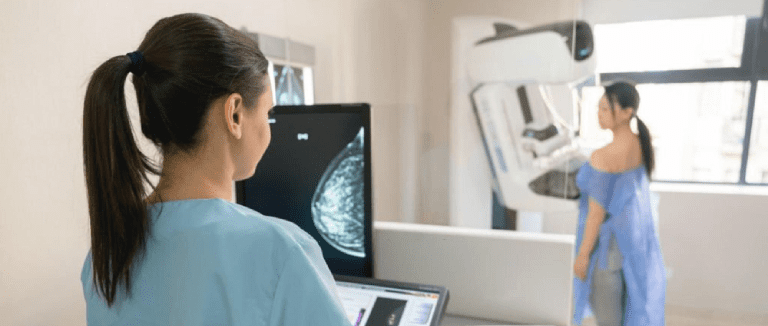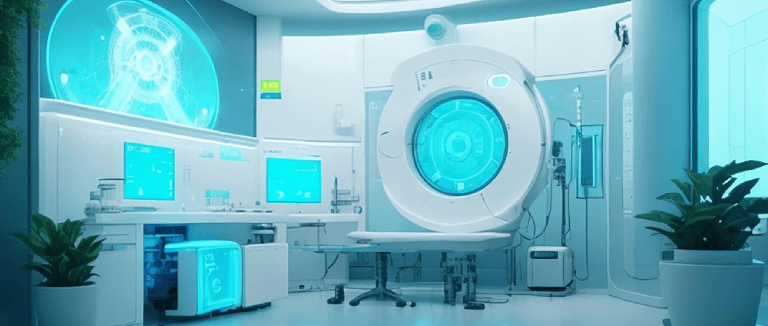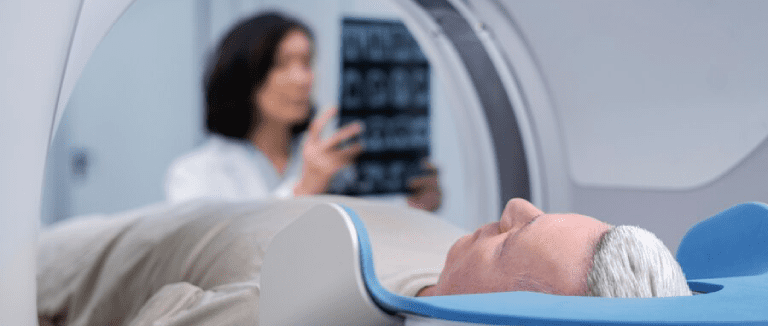Radiotherapy: A Safe and Effective Cancer Treatment
Radiotherapy, also known as radiation therapy, is a medical procedure that uses high-energy radiation to target and destroy abnormal or cancerous cells in the body. These treatments work by damaging the DNA of cancer cells, preventing them from growing and multiplying. Radiotherapy treatments for cancer are widely used either alone or in combination with other methods such as surgery or chemotherapy.
Depending on the type and location of the cancer, radiotherapy can be delivered externally or internally over multiple sessions. The primary goal of radiotherapy treatments for cancer is to eliminate cancer cells effectively while minimizing damage to surrounding healthy tissues, helping patients achieve better recovery and quality of life.

Types Of Radiotherapy Treatment
Radiation therapy is mainly divided into two primary types: external beam radiation therapy (EBRT) and internal radiation therapy (also known as brachytherapy).
External Beam Radiotherapy (EBRT)
External Beam Radiotherapy (EBRT) uses high-energy X-ray or photon beams produced by a linear accelerator. These beams are directed from outside the body and accurately focused on the tumor. EBRT is highly versatile and can be used to treat many different cancers, either in early stages or as part of palliative care when cancer is advanced. Several advanced techniques are available within EBRT to maximize precision while protecting healthy tissue. These include Intensity-Modulated Radiation Therapy (IMRT), Image-Guided Radiation Therapy (IGRT), and Volumetric Modulated Arc Therapy (VMAT).
Internal Radiotherapy (Brachytherapy)
Brachytherapy is a specialized form of radiotherapy in which radioactive sources are placed directly inside or very close to the tumor. These sources emit targeted radiation from within the body, effectively destroying cancer cells while minimizing damage to surrounding healthy tissues. This approach is particularly beneficial for cancers located in areas where external radiation therapy may be less effective or when precision is crucial to protect nearby organs.
Brachytherapy is generally classified into two main types based on the intensity and duration of radiation exposure:
1. Low-Dose Rate (LDR) Brachytherapy
In LDR brachytherapy, small radioactive seeds or sources are implanted into the body and left in place for an extended period, ranging from several days to months. The radiation is delivered gradually over time. This technique is most commonly used in the treatment of prostate cancer, where the seeds remain permanently or are removed once the dose is completed.
2. High-Dose Rate (HDR) Brachytherapy
HDR brachytherapy involves temporarily placing highly radioactive sources near the tumor for a short duration during each treatment session. This method delivers a higher dose of radiation in a brief, controlled period and is typically used for gynecological cancers, as well as head and neck and breast cancers. After each session, the radioactive source is removed, ensuring no residual radiation remains in the patient’s body.
Both LDR and HDR brachytherapy provide precise, localized radiation delivery, making them effective options for achieving tumor control while preserving healthy tissue function.
Radiotherapy For Cancer
Radiotherapy for cancer plays a vital and multifaceted role in cancer care, contributing significantly to the management of the disease. There are three main approaches to radiotherapy treatment for cancer: primary treatment, adjuvant treatment, and neoadjuvant treatment.
Primary Treatment
In certain situations, radiotherapy is used as the main treatment for cancer. This is especially the case when surgery is not possible, or when the tumor is highly sensitive to radiation.
Adjuvant Treatment
Radiotherapy can also be used after surgery as an adjuvant treatment to destroy any remaining cancer cells that may have been missed. The main goal of adjuvant radiotherapy is to lower the risk of cancer coming back in the area where surgery was performed.
Neoadjuvant Treatment
On occasion, radiotherapy is given before surgery. This neoadjuvant approach is employed to shrink large or locally advanced tumors, making them more manageable to remove surgically. Neoadjuvant radiotherapy can improve surgical outcomes and increase the likelihood of a complete tumor resection.
You might have inquiries such as how long after radiotherapy will I feel better? You may reach out to us with such questions and be informed.

Radiotherapy Vs Chemotherapy
Radiotherapy and chemotherapy are two primary cancer treatment modalities in Istanbul, each with distinct mechanisms and applications. Radiotherapy utilizes high-energy radiation to target and damage cancer cells, specifically in the treatment area, offering high precision and minimal collateral damage to surrounding healthy tissue. It is typically applied for localized cancer, with the potential to be curative or palliative.
In contrast, chemotherapy is a systemic approach that uses drugs circulating through the bloodstream to attack rapidly dividing cancer cells at both primary and distant sites. Chemotherapy's systemic effects can result in a wider range of side effects, making it suitable for systemic and palliative treatment, especially in advanced or metastatic cancer.
The choice between radiotherapy and chemotherapy is influenced by factors such as the cancer type, stage, location, and the overall health of the patient, and in many cases, they are used together to achieve the most effective treatment outcomes.
Effectiveness Of Radiotherapy
To learn more about how radiotherapy might benefit you, please contact us for more information about treatments for different conditions..
Radiotherapy's precision, achieved through advanced techniques, minimizes side effects by targeting the tumor while sparing healthy tissue. Radiotherapy is a vital tool in cancer management, offering curative potential, symptom relief, and enhanced long-term outcomes when combined with other treatments and personalized to each patient's needs.
You can connect with us to learn about the advantages of radiotherapy treatments for various diseases.

Radiotherapy Side Effects
Like most medical treatments, radiotherapy may lead to certain side effects. The type and severity of these effects depend on various factors, including the type and location of cancer, radiation dose, and individual patient response. While many side effects are temporary and manageable, understanding them helps patients prepare and take preventive measures.
Common Side Effects of Radiotherapy
- Skin Reactions: Redness, itching, dryness, and, in some cases, blistering or peeling of the skin in the treated area.
- Fatigue: A common effect that may develop gradually during treatment and persist for some time afterward.
- Hair Loss: Hair loss can occur in the area exposed to radiation but is usually localized and may be temporary.
- Nausea and Vomiting: Often associated with radiotherapy to the abdomen or brain, these symptoms can usually be managed with medication.
- Changes in Taste or Appetite: Some patients may experience an altered sense of taste or reduced appetite, particularly during head and neck treatments.
- Swelling: Mild swelling or inflammation may develop in the treated region as tissues respond to radiation.
- Breast Sensation Changes: After breast radiotherapy, patients may notice changes in sensation, which can occur as a delayed or long-term effect.
- Difficulty Swallowing: When the throat or chest area is treated, temporary discomfort or difficulty swallowing may arise.
- Changes in Bowel Habits: Radiotherapy targeting the pelvic or abdominal area may lead to diarrhea, constipation, or other bowel irregularities.
While these side effects can be challenging, most are short-lived and improve gradually after treatment ends. Regular follow-up with healthcare professionals ensures early management and promotes a smoother recovery process.
* Liv Hospital Editorial Board has contributed to the publication of this content .
* Contents of this page is for informational purposes only. Please consult your doctor for diagnosis and treatment. The content of this page does not include information on medicinal health care at Liv Hospital .
For more information about our academic and training initiatives, visit Liv Hospital Academy
Frequently Asked Questions
What is radiotherapy treatment used for?
Radiotherapy, also known as radiation therapy, is primarily used to treat cancer by destroying or shrinking cancer cells. It can also be used to relieve symptoms in advanced cancer cases, such as pain or bleeding.
How does radiotherapy work?
Radiotherapy uses high-energy radiation to damage the DNA of cancer cells, preventing them from growing and multiplying. Over time, the damaged cells die, and the body naturally removes them.
Is radiotherapy painful?
No, radiotherapy itself is not painful. Patients do not feel the radiation during the session. However, some may experience mild discomfort or skin irritation in the treated area after several sessions.
How long does a radiotherapy session take?
A typical radiotherapy session lasts between 10 to 30 minutes, depending on the type of cancer and the treatment plan. Most patients receive treatment five days a week for several weeks.
What are the common side effects of radiotherapy?
Common side effects include skin irritation, fatigue, hair loss, nausea, and changes in appetite or bowel habits. These effects vary depending on the treatment area and usually subside after therapy ends.
Can radiotherapy be combined with other treatments?
Yes. Radiotherapy is often used alongside surgery, chemotherapy, or immunotherapy. The combination depends on the type and stage of cancer and helps improve treatment effectiveness.
How should I care for myself during radiotherapy?
It’s important to rest, stay hydrated, and eat a balanced diet. Protect the treated area from sun exposure and avoid harsh skincare products. Follow your doctor’s instructions carefully and report any unusual symptoms promptly.



